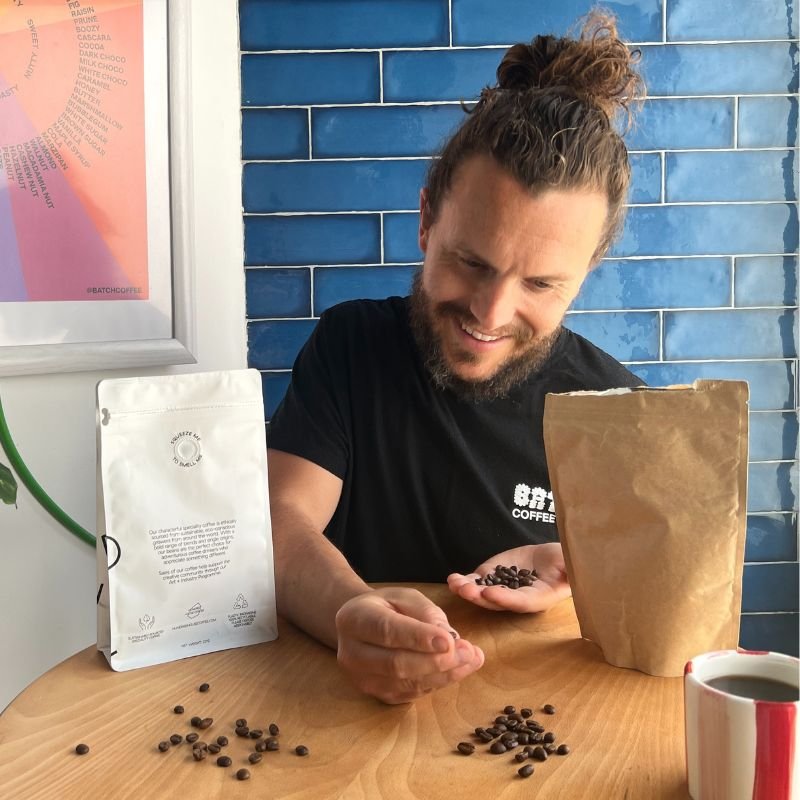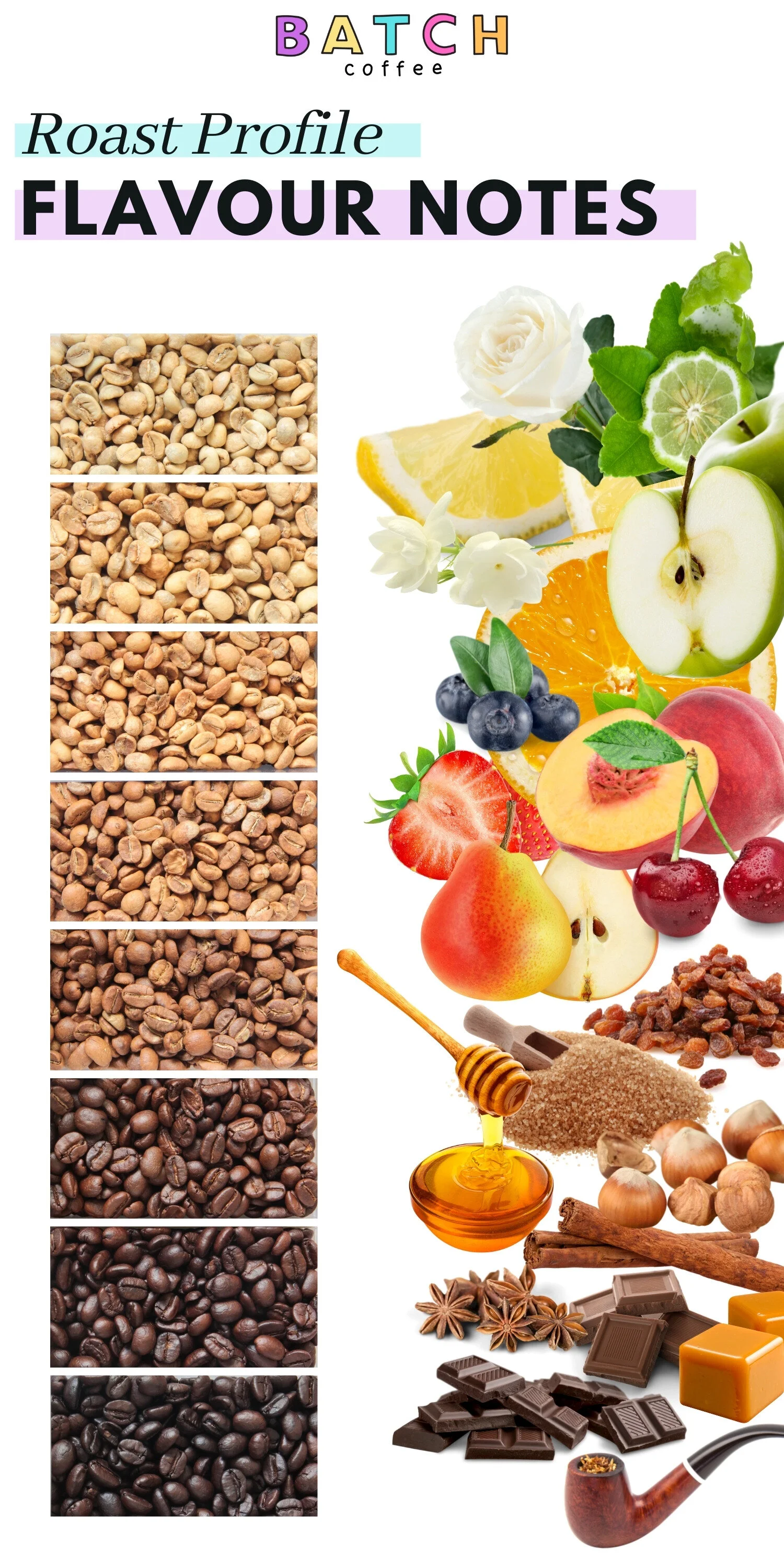What Are The Different Types Of Coffee Roast? From Light to Dark
Do you have a favourite coffee roast?
There is far more to coffee roasting than just throwing a few raw coffee beans into an oven. Let’s discuss the different coffee roasts.
You will sometimes see the type of coffee roast or the roast profile displayed on retail bags alongside the origin and other details such as altitude and varietal.
Supermarket coffees may display strength or roast usually with a number from 1-10.
UK’s #1 Coffee Subscription
Use BREWTIME50 for 50% off your first box
This refers to the difference between coffee roasts and the strength referring to the taste rather than the caffeine where strong is rich and bitter.
There isn’t really such thing as the ‘best coffee roast’ as it all boils down to preference.
However certain types of coffee such as varietal or origin taste better when roasted a particular way.
We spoke to Nick, owner of Your Coffee and Tea about how different roasts of coffee can alter the end cup of coffee.
Roasting is needed to unlock the flavors contained in the green bean explains Nick.
Heat is required to trigger chemical reactions to get compounds that are soluble in water, which give coffee its well-known flavour!
Further, different coffee roast levels result in an amazing variety of flavour profiles.
How Does Coffee Roasting Actually Work, and Why Does It Matter?
Coffee roasting is a precise chemical process that transforms raw, green coffee beans into the aromatic brown beans we're familiar with. During roasting, heat triggers a series of chemical reactions that develop the complex flavours we associate with coffee.
The process begins at around 180°C, where beans undergo their first 'crack' - an audible splitting as moisture escapes and the beans expand.
The roasting process fundamentally changes the bean's chemical composition. Initially, moisture evaporates, and the beans turn from green to yellow, then tan, and progressively darker shades of brown.
The Maillard reaction occurs around 150°C, creating melanoidins that contribute to flavour development and colour. As temperatures increase, oils begin migrating to the surface, sugars caramelise, and organic compounds break down, each stage creating distinct flavour characteristics.
The roaster's skill lies in knowing exactly when to stop this process to achieve the desired flavour profile.
Light roasts (180-205°C) preserve more of the bean's original characteristics, medium roasts (210-220°C) offer balanced profiles, whilst dark roasts (240-250°C) develop more intense, bitter flavours as sugars caramelise further.
Different Coffee Roast Levels?
Coffee roast levels are typically referred to as Light, Medium , Medium-Dark and Dark.
The roasting level is one of the most important factors that determine the taste of your coffee.
Roasting at high temperatures cause oils to be released at the surface of the beans which influence the flavour.
Coffee Cupping Form. Photo: Barista Hustle
Light Roast Coffee
Light roast happens when the bean's internal temperature reaches somewhere between 180 – 205°C (355 – 400°F).
At this point you usually hear a cracking sound, due to the beans expanding in size.
Light roasts are not roasted much beyond this first 'crack'. They exhibit acidic flavors, have no oil at the surface, and are best used for pour-over coffee.
Medium Roast Coffee
Medium roasts usually result from roasting temperature ranges between 210 - 220°C (410 - 428°F), which is usually the range before the 'second crack' occurs.
Medium roasts are not roasted beyond this 'second crack'.
Medium roasts have more body and less acidity and caffeine than light roasts, and are typically characterised with a balanced flavor profile.
Medium-Dark Roast Coffee
Medium-Dark roasts usually result from roasting temperature ranges between 225 - 230°C (437 - 445°F), which is beyond the time when the 'second crack' occurs.
At this roast level, you start to see significant amounts of oils being released to the bean's surface.
Organic acids start to burn at these temperatures, and more bitter and sweet flavours start becoming more dominant.
Dark roast coffee
Dark roasts usually result from roasting temperature ranges between 240 - 250°C (465 - 482°F).
Temperatures of 250 °C are rarely reached or exceeded; otherwise you will get a coffee with predominant charcoal like flavours.
Dark roasts have no acidity, and have bitter, smoky and sweet flavours. Dark roasts have less caffeine than lesser roast levels.
How Do Different Coffee Roasts Taste?
Usually darker roasts have more sweetness.
But an important factor of sweetness is green bean selection (i.e. high quality green beans).
If the green bean has no sugar to begin with, or has high acidity, it will be hard to extract the sweetness via roasting.
At the end of the drying phase, at around 150 °C the Maillard reaction takes place.
Melanoidins are produced which influence the flavour of the coffee.
Coffee beans that spend little time in the Maillard reaction phase tend to have more sweet notes (and acid tones which get 'burnt' at higher roasting levels.
At higher temperatures, caramelization occurs, which also impacts the sweetness level of your coffee.
So yes, darker roasting levels tend to have sweeter tones, but other factors other than roasting level influence the sweetness!
So you could have a medium roast that is sweeter than a medium-dark roast, given above factors.
Take a look at this graph from Ikawa highlighting how the different flavours and characteristics in coffee change throughout the roast.
How Do You Choose the Right Roast for Different Brewing Methods?
Choosing the appropriate roast level isn't just about personal taste - it's also about matching the roast to your brewing method.
Different extraction methods work better with certain roast levels due to how they extract flavour compounds from the beans.
Pour-over and filter methods typically work best with light to medium roasts, as these methods can highlight the subtle, complex flavours that lighter roasts preserve.
The slower extraction process allows for the development of delicate floral notes and bright acidity that these roasts are known for.
Espresso and stovetop methods generally pair better with medium to darker roasts. The high-pressure, rapid extraction of espresso can accentuate acidity, sometimes unpleasantly, in light roasts.
Darker roasts, with their oils more readily available on the surface, produce better crema and a more balanced espresso shot. The longer caramelisation process in darker roasts also helps develop flavours that can cut through milk in drinks like lattes and cappuccinos.
Find out which of the coffees we have tasted this made it on the Best Espresso Beans UK.
How Do You Roast Coffee?
Roasting coffee is the process of heating coffee green beans up at a certain level so you will end up with an evenly roasted batch of coffee that highlights the best characteristics of the coffee.
Now, the traditional way of roasting coffee is to stir the green coffee around a large skillet pan over a fire.
The thing is with this technique it’s impossible to control the many variables that are present when you roast coffee like heat, airflow and agitation.
You will almost certainly end up with some coffee scoured and burnt while others are baked.
This will result in a flat tasting coffee.
Today coffee roasting is performed in a coffee roaster where each variable can be controlled in varying degrees depending on the machine.
This enables coffee roasters to highlight what they deem a characteristic in coffee by creating a recipe for the roast.
Take a look at this typical roast curve by one of the leading coffee roasting gurus Scott Rao where the ROR is the rate of rise and the bean temp curve is the predicted temperature of the beans (this is taken from a probe inside the coffee roaster).
By altering variables such as the temperature of the roaster, the airflow and the drum speed the graph can be manipulated to draw out various attributes of coffee.
List of Different Roast Profiles:
Light City
Half City
Light City
Cinamon
New England
White Coffee
American
Regular
City
Breakfast
Full City
After Dinner
High
Continental
European
Espresso
Spanish
Vienna
French
Italian
What Type of Coffee Roast Has The Most Caffeine?
According to Sprudge one of the worlds most popular coffee publications, caffeine is very stable through the roasting process.
If you were to roast a coffee way past dark roast then you may encounter a difference but that would be basically turning the coffee into charcoal.
That said there comes a difference in caffeine when you step aside from examining individual beans and look at the differences in caffeine levels when the coffees are ground.
As coffee is roasted it looses mass, so darker roasted coffee is lighter than lighter roasts therefore there is more ‘coffee’ packed into darker roast brews than lighter.
Sprudge use the analogy of there is more sugar in a kilo of raisins than a kilo of grapes.
So there is in fact more caffeine in a bag of darker roasted coffee but not for the reasons you would think.
Which Coffee Roast is The Strongest?
This is a question that I used to get asked often when I used to roast coffee. People would come in to buy a bag of coffee and ask for the strongest roast.
I think many people liken strength in coffee to strength in alcohol where strength not only refers to taste but also level of alcohol.
As discussed above there is not much difference in caffeine content in coffee when it comes to roasts, so in-fact strength in coffee refers to flavours, where strong flavours are roasty and dark.
What is The Healthiest Coffee Roast?
According to the Coffee Universe, the biggest difference in light to dark roasts is the levels of chlorogenic acid and antioxidant qualities.
Studies show that there is a higher content of chlorogenic acid in lighter roasted coffee.
Therefore the lighter roast seem to offer higher antioxidant properties, making them better for the drinker.
The study also found that light roast was better for protecting against inflammation and cell damage compared to its dark roast counterpart.
What Roast of Coffee is The Smoothest?
When it comes to cup profile, smoothness is often a buzzword that people look out for.
A smooth coffee has body but doesn’t have any sharp or bitter notes.
It is balanced, well rounded and usually has enough depth to carry through a milk based coffee.
The smoothest roast profile is a medium roast.
Neither light and acidic or dark and bitter, a medium roast coffee is usually the choice of most smooth coffee lovers.
Which coffee roast is bitter?
The most bitter tasting coffee roast is a dark roast coffee.
As the roast extends past the second crack, the heat starts to turn the balanced flavour compounds into bitter tasting carbon (think about the taste of burnt toast).
You may also come across bitter tasting light or medium roast coffee beans, this may be down to the qualities of the green coffee or the processing method.
Which coffee roast is sweeter?
Generally sweeter tasting roasts are medium roasts.
This is because they are somewhere in the middle of dark roasted bitter tasting coffee and light roasted acidic coffee and have managed to create a sweet balance.
You may find flavours such as stone fruits or milk chocolate in medium roast coffee.


















